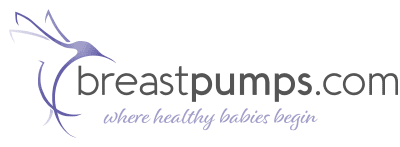Cleaning Your Breast Pump
Breastpumps provide a convenient way to continue feeding your
baby breast milk when you return to work or are apart from each
other. It is important however that you keep your breast pump clean
to protect the health and safety of both you and your baby.
cleaning
Immediately after use, all pump parts that are exposed to breastmilk should be washed with hot water and a mild detergent. Avoid using abrasive products, chemicals, antibacterial soaps or bottlebrushes that could scratch or crack pump parts. You should not continue to use breast pump parts that become scratched or cracked.
All pump parts should be rinsed thoroughly with hot water after washing to ensure that all soap residue is removed. Allow cleaned parts to air dry on a clean towel. If washing must be delayed, all parts should be rinsed thoroughly with hot water after use.
If milk should enter the breastpump tubing, detach tubes from the motor, wash with mild soap and hot water, rinse thoroughly and hang to air dry.
As an additional precaution, you should always wash your hands thoroughly with soap and warm water before and after handling your breast pump to prevent cross contamination of germs.
Sterilizing
Many pump manufacturers recommend boiling or sterilizing all washable pump parts once a day. Although in some cases, sterilization is required after each use. Speak with your child’s healthcare professional to determine your sterilization needs.
The current guidelines for disinfecting infant feeding items require that a minimum temperature of 176°F must be reached to kill bacteria and viruses. The maximum temperature for sterilization is 212°F. There are several options for sterilizing your pump’s parts, which include:
- Boiling for 5 to 10 minutes
- Top Rack of Dishwasher
- Electric Sterilizer
- Microwave Sterilizing
These guidelines for cleaning and sterilizing your breastpump parts are provided for informational purposes only and are not intended to replace instructions provided by the pump manufacturer or your child’s primary healthcare professional. If you have questions or concerns about how to best clean your breast pump consult your lactation consultant or healthcare provider.
Return to: Breast Pumping Basics

Does Your Insurance Qualify?
Need help? Give us a call at 888-495-7491 Monday - Friday, 8:30 a.m. - 5:30 p.m. and Saturday/Sunday 9:00 a.m. -- 5 p.m.


